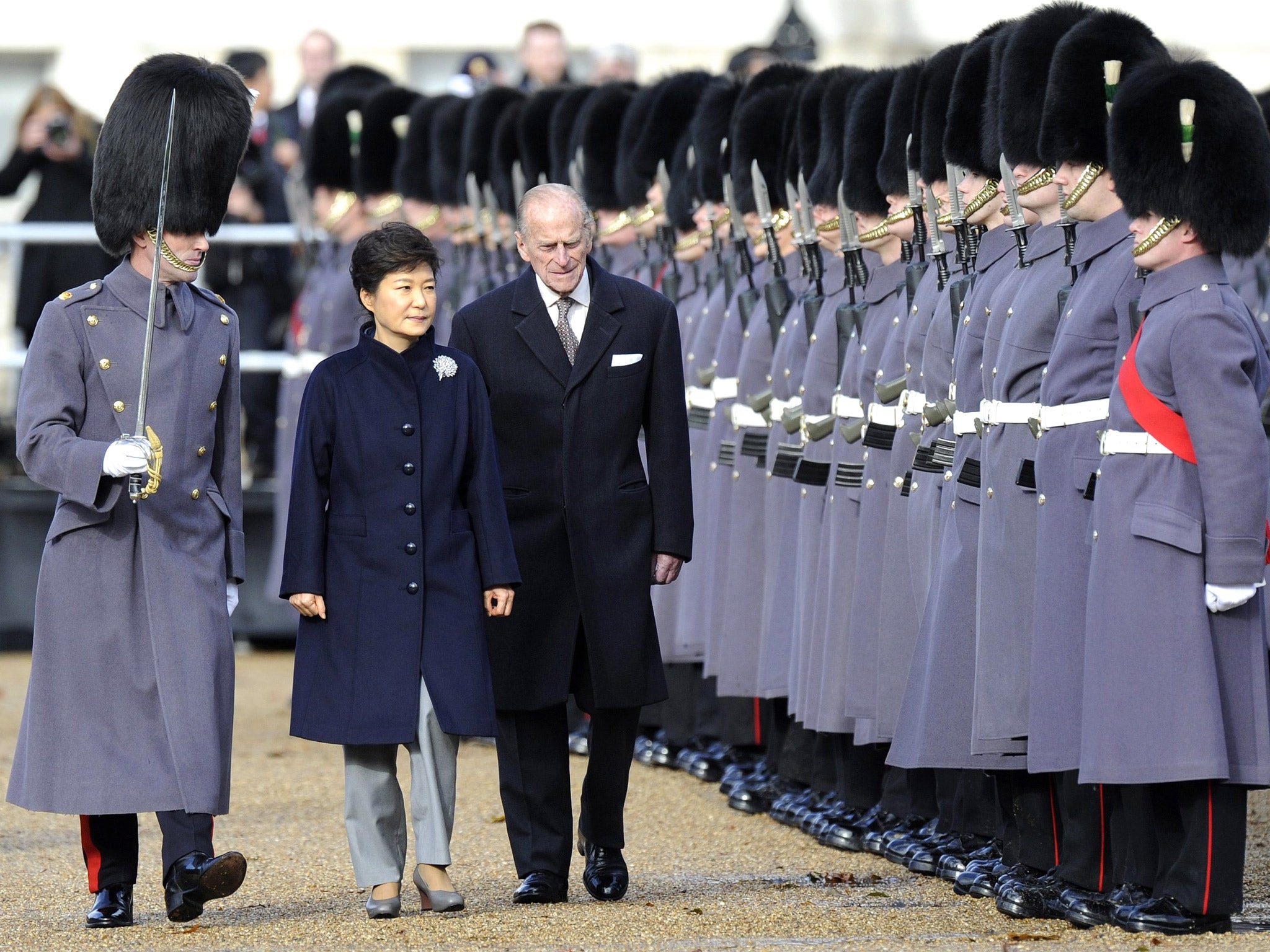South Korea refuses to forgive Japan’s wartime atrocities
World Focus: In South Korea a sense of vulnerability bred from past humiliations lies just below the surface

Old hatreds bred from old atrocities and injustices are slow to disappear. South Korean President Park Geun-hye said at the start of visits to France and Britain this week that she is willing to hold a summit anytime with the North Korean leader Kim Jong-un, whose country intermittently threatens war against South Korea.
But she rejects flatly any idea of meeting with the Japanese Prime Minister Shinzo Abe until Japan apologises for wrongdoings during its 35-year occupation of Korea.
In particular, South Korea wants a deeper apology and greater compensation for an estimated 200,000 South Korean “comfort women” who were forced to work as prostitutes in Japanese military brothels during the occupation. Everything to do with the 1910-45 Japanese occupation of Korea, brutal and authoritarian even compared with most other imperial occupations, still festers. The Japanese response to Ms Park’s remarks – that what happened during the occupation and Second World War is very ancient history – is not going to mollify South Korean resentments.
Small issues in the dispute generate extreme animosity, such as the true ownership of a rocky island and surrounding islets called Dokdo by Korea and Takeshima by Japan. Situated in the sea in between the two countries, South Korea holds Dokdo and has stationed a coastguard detachment there. But the Japanese Foreign Ministry refers to this as an “illegal occupation”. South Korea has just celebrated “Dokdo Day” and Japan will soon hold “Takeshima Day”. Speaking about the issue of the South Korean women forced into sex slavery, Ms Park told an interviewer this week that “these are women who spent their blossoming years in hardship and suffering, and spent the rest of their lives in ruins”. She added that as long as the Japanese did not change their perception of what Koreans see as these past crimes, “what purpose would a summit serve”?
The speed of South Korea’s economic development is astonishing. The country, which most people in Europe could not find on the map a century ago, is now the sixth-biggest exporter and the 15th biggest economy in the world. Yet a sense of vulnerability bred from past humiliations and suffering still lies not far beneath the surface. South Korea may be courted by world leaders today but look back just over a century ago to 1905 when one of Korea’s first diplomats in London took poison and killed himself because there was nothing he could do to prevent Japan’s takeover of Korea with the approval of Britain.
The suicide of Yi Han Yeung, a 31-year-old diplomat who had been in London for four years, took place in Flat 4, Sunnyhill Court, in Trebovir Road, a gloomy, rundown street off Earls Court Road. It was probably as depressing an address for a small legation in 1905 as it is today, a prominently placed CCTV the only obvious addition to its shabby doorway in the years since. No plaque commemorates Mr Yi’s death or the reasons for it.
At that time the suicide was scarcely noticed in the British or Korean press. The Korean government was a pawn in the struggle for control of the Korean peninsula between Japan, Russia and China, with Britain keen to keep on good terms with Japan when it emerged as the winner at the end of the Russo-Japanese war. Mr Yi’s desperate but vain efforts to preserve Korea’s independence would not have cut much ice with the Foreign Office, which was enthusiastic for Britain’s new alliance with Japan.
The significance of Mr Yi’s death is it showed that, even at the lowest point in Korean history, there were Koreans who were prepared to die rather than mutely accept foreign domination. Back in Korea, his family remains proud of his sacrifice. I went with Mr Yi’s grandson, Professor Yi Miseob, to a wooded hill the family owns an hour’s drive from Seoul where the young diplomat is buried beside a memorial stone with a view of small fields in a valley bottom with a steel mill in the middle distance.
Ms Park’s visit to the UK is marked by events and exhibitions aiming to show South Korea’s cultural and technological prowess. But the exhibit that is most original, interesting and revealing about modern Korea in an exhibition at Old Billingsgate is a long raised garden of green plants and ferns growing in a bed of gravel and an occasional rock with a stream of water running down the middle. Ji-hae hwang, the designer, points to a small green plant commonly called the horse leek, which, aside from a reputation in Korea for supposedly preventing cancer, is a symbol of Korean determination to survive in adverse circumstances. She had filled the garden with green plants and only a few flowers to underline a lack of gaudiness in the Korean character.
Somehow, this strange and wonderful garden seemed to tell one more about the Korean character than all the other gadgets and designer items on display.
Subscribe to Independent Premium to bookmark this article
Want to bookmark your favourite articles and stories to read or reference later? Start your Independent Premium subscription today.

Join our commenting forum
Join thought-provoking conversations, follow other Independent readers and see their replies